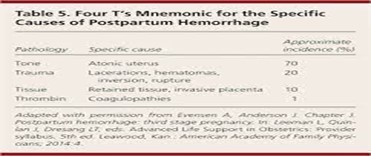Excessive blood loss after childbirth can have several causes; the most common is:
unrepaired lacerations of the vagina or cervix.
retained placental fragments.
vaginal or vulvar hematomas.
failure of the uterine muscle to contract firmly.
The Correct Answer is D
The most common cause of excessive blood loss after childbirth is the failure of the uterine muscle to contract firmly, which is also known as uterine atony. If the uterus does not contract effectively after delivery, it cannot properly close off the blood vessels that were connected to the placenta, leading to heavy bleeding. Uterine atony can occur due to various factors, such as prolonged labor, multiple births, or the use of certain medications during labor.
Other causes of excessive blood loss after childbirth include retained placental fragments, vaginal or vulvar hematomas, or unrepaired lacerations of the vagina or cervix, but these are less common than uterine atony.

Nursing Test Bank
Naxlex Comprehensive Predictor Exams
Related Questions
Correct Answer is C
Explanation
Both genes of a pair must be abnormal for the disorder to be expressed. In autosomal recessive inheritance, the gene for the disorder is located on an autosome (any chromosome other than a sex chromosome) and a person must inherit two copies of the abnormal gene (one from each parent) in order for the disorder to be expressed. If a person inherits only one copy of the abnormal gene, they are a carrier of the disorder but do not typically show symptoms.
Correct Answer is C
Explanation
This is because magnesium sulfate can cause respiratory depression, and a respiratory rate of 10 breaths/minute is significantly lower than the normal range of 12-20 breaths/minute. Other factors such as blood pressure of 138/88, the urinary output of 40 ml/hr, and patellar reflex of +2 should also be monitored, but they would not necessarily warrant immediate discontinuation of the magnesium sulfate infusion.
Whether you are a student looking to ace your exams or a practicing nurse seeking to enhance your expertise , our nursing education contents will empower you with the confidence and competence to make a difference in the lives of patients and become a respected leader in the healthcare field.
Visit Naxlex, invest in your future and unlock endless possibilities with our unparalleled nursing education contents today
Report Wrong Answer on the Current Question
Do you disagree with the answer? If yes, what is your expected answer? Explain.
Kindly be descriptive with the issue you are facing.
